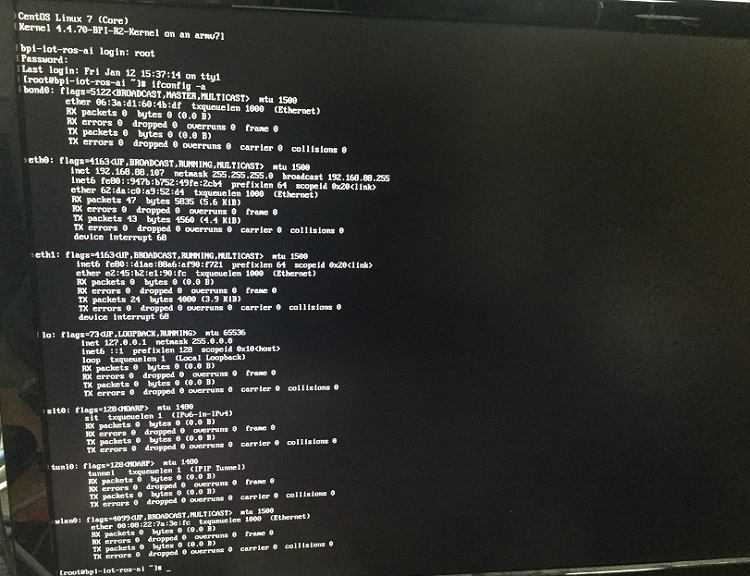New image : 2018-01-12-centos-7-lite-for-banana pi

BPI-M2 Magic CentOS lite image 2018-01-04
2018-01-12-centos-7-lite-v1.0-bpi-m2m-sd-emmc.img.zip
MD5: 91838e87b8e73d06b03b4664361bba17
Google Drive:
Baidu cloud:
https://pan.baidu.com/s/1o9O3znk
BPI-M2+ (BPI-M2 Plus) CentOS lite image 2018-01-04
2018-01-12-centos-7-lite-v1.0-bpi-m2p-sd-emmc.img.zip
MD5: 3276dce46fbe614f58f5dfaeea2ad3b6
Google Drive:
Baidu cloud:
https://pan.baidu.com/s/1cYLbCa
BPI-M2 Ultra/BPI-M2 Berry CentOS lite image 2018-01-04
2018-01-12-centos-7-lite-v1.0-bpi-m2u-sd-emmc.img.zip
MD5: 931d2ddc33c4ecb3f95ffca2658ef190
Google Drive:
Baidu cloud:
https://pan.baidu.com/s/1jKioxDk
BPI-M2 Zero CentOS lite image 2018-01-04
2018-01-12-centos-7-lite-v1.0-bpi-m2z-sd-emmc.img.zip
MD5: bb504045a1304d135978979de0a20edd
Google Drive:
Baidu cloud:
https://pan.baidu.com/s/1bquxFDt
BPI-M3 CentOS lite image 2018-01-04
2018-01-12-centos-7-lite-v1.0-bpi-m3-sd-emmc.img.zip
MD5: 5236d94a89e43ae21c63e4b775706494
Google Drive:
Baidu cloud:
https://pan.baidu.com/s/1smdaksX
BPI-R1 CentOS lite image 2018-01-04
2018-01-12-centos-7-lite-v1.0-bpi-r1-sd-emmc.img.zip
MD5: b6b3bba4cd54915d53dcb7e0e70239d0
Google Drive:
Baidu cloud:
https://pan.baidu.com/s/1kWJjRmB
BPI-R2 CentOS lite image 2018-01-04
2018-01-12-centos-7-lite-v1.0-bpi-r2-sd-emmc.img.zip
MD5: 48c39640bd6ce11331dfdce86543e194
Google Drive:
Baidu cloud:
https://pan.baidu.com/s/1pMnnDu7
BPI-R1 CentOS lite image 2018-01-04
=============================================================
- r1 has new switch driver with kernel 4.x
- build the uboot-2018.01 with kernel 4.14.12 for bpi-r1
- bpi-bootsel can support others
=============================================================
2018-01-12-centos-7-lite-v1.0-linux4-bpi-r1-sd-emmc.img.zip
MD5: 1cd1c653c3a2e88601499134b6fee12c
Google Drive:
Baidu cloud:
